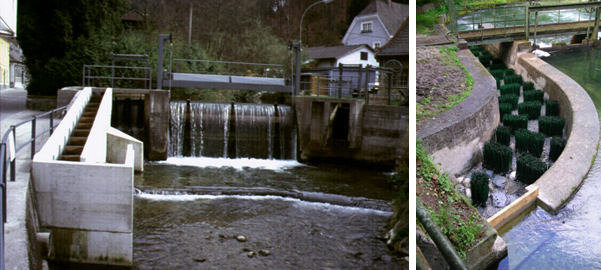Aspects écologiques

On ne saurait envisager l’installation d’une petite centrale sans se préoccuper de son impact sur l’environnement.
On remarquera toutefois que dans aucun autre domaine des techniques énergétiques on ne trouve un tel potentiel en friche, provenant de sources renouvelables, immédiatement disponibles, facilement exploitables et ceci à des prix financièrement supportables, en comparaison des autres procédés classiques de production d’électricité.
Il est toutefois nécessaire de trouver un juste compromis entre la nécessité d’utiliser une énergie indigène renouvelable et la préservation du milieu. Les lois sur la pêche, sur l’énergie et sur la protection des eaux fournissent le cadre légal à toute réalisation.
Dans ce sens, diverses mesures permettent de limiter l’impact d’une petite centrale, voire même d’améliorer les qualités paysagères et environnementales par rapport à la situation initiale :
- Création de dispositifs de franchissement de seuils et retenues pour les poissons et les invertébrés.
- Maintien d’un débit résiduel dans le tronçon court-circuité.
- Aménagement du tronçon court-circuité pour permettre une vitesse d’écoulement satisfaisante.
- Eviter les vidanges des retenues en périodes d’étiage.
- Création de zones de vie dans les bassins.
Il est également intéressant de relever que le remplacement d’un GWh (correspondant à la consommation électrique moyenne de 220 ménages) d’électricité mixte suisse par un GWh d’électricité d’origine hydraulique permet une réduction de 11.8 tonnes d’émissions de CO2. L’économie atteint même 481 tonnes lorsque l’on compare ces émissions à celles engendrées par un GWh du réseau européen (Source Eurelectric).
Notre société ayant besoin d’énergie, et toute activité humaine générant des nuisances à l’encontre de l’environnement, l’attitude la plus raisonnable consiste à choisir le mode de production le moins pénalisant.

